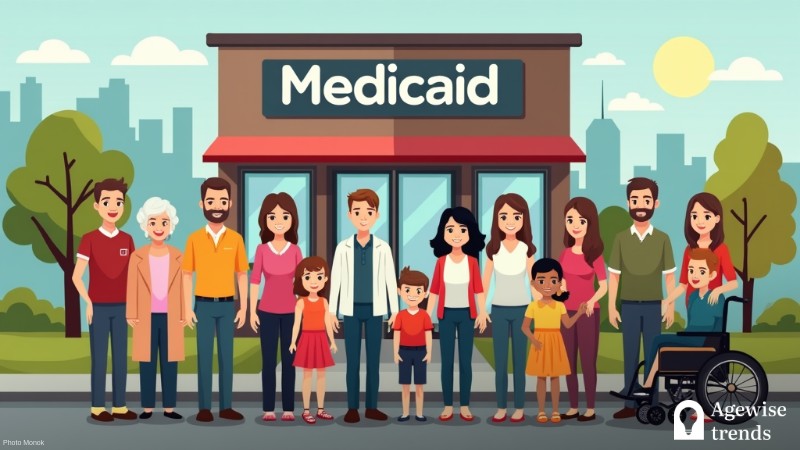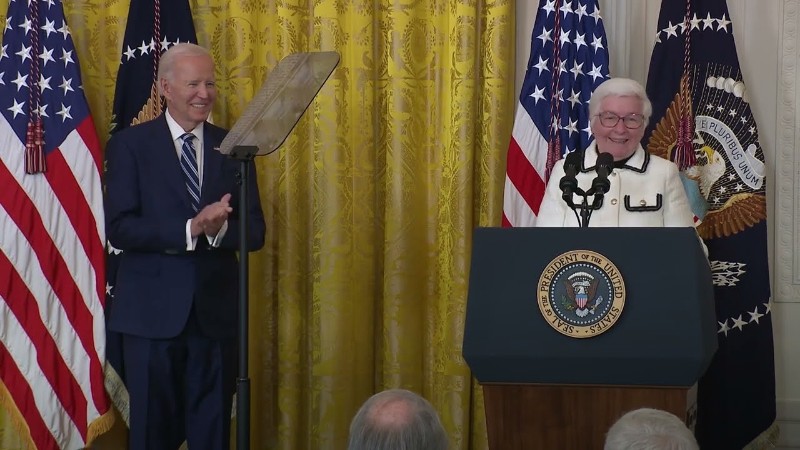As an insurance safety net covering one in five Americans, Medicaid faces intense scrutiny: lawmakers are weighing major funding cuts and an aging population is leaning on it more than ever.
The program stands at a crossroads, with decisions made now poised to shape the healthcare safety net for years to come.
Key Takeaways
Medicaid, a crucial healthcare safety net for one in five Americans, faces potential major funding cuts that could reshape healthcare access and quality, especially for vulnerable populations.
- Proposed federal Medicaid cuts could eliminate coverage for nearly 16 million people and severely impact healthcare systems, particularly in low-income and rural areas.
- Medicaid is essential for seniors, covering long-term care costs that Medicare and private insurance don’t, and any cuts could worsen the challenges faced by aging populations.
- The future of Medicaid will depend on striking a balance between fiscal sustainability and the healthcare needs of Americans, with potential reforms affecting hospitals, state budgets, and households across the nation.
The threat of funding cuts
In Washington, budget cutters have fixed their gaze on Medicaid. Proposals have emerged to significantly reduce federal Medicaid spending, ostensibly to rein in deficits. For instance, a recent House budget plan sought $880 billion in Medicaid cuts over the next decade – a reduction so steep that it could eliminate coverage for nearly 16 million people.
Such drastic cuts would ripple outward in damaging ways. Medicaid doesn’t just pay doctor bills – it props up entire healthcare systems, especially in poor and rural areas. Reduced federal funding would force states to make “tough choices,” likely slashing optional benefits or reducing payments to hospitals and clinics.
Analysts warn that cuts could lead to hospitals closing and fewer providers accepting Medicaid patients due to lower reimbursements. This is especially perilous for rural communities, where many residents already struggle to find nearby care.
Because seniors and people with disabilities (who make up only about 21% of Medicaid enrollees but over 50% of program costs) rely on expensive services, funding cuts might hit those groups hardest – threatening nursing home beds, home health aides, and specialty care that Medicaid finances.
Despite arguments that trimming Medicaid is a budget necessity, public opinion leans strongly against it. Polls show fewer than one in five Americans support decreasing Medicaid funding, while the vast majority want funding increased or maintained. In short, the push for cuts faces not only human costs but broad public skepticism, given Medicaid’s importance in communities nationwide.
Medicaid and seniors
Often overlooked in Medicaid discussions is the program’s indispensable role for older Americans. Millions of seniors – about 7.2 million people over age 65 – are enrolled in Medicaid. For some, Medicaid simply helps pay Medicare’s out-of-pocket costs or provides benefits Medicare doesn’t (like vision or hearing aids).
But for many others, Medicaid is the only way they can afford long-term care when age, illness, or dementia make independent living impossible. Medicaid is the main source of coverage for long-term care services in the U.S., picking up costs that Medicare and private insurance generally won’t.
The dependence on Medicaid for elder care is vast: Medicaid pays the bills for 62% of nursing home residents. In 2019 alone, Medicaid spent about $50 billion on nursing facility care. Long-term care is extremely expensive – the median cost of a private nursing home room is now over $100,000 per year.
Few retirees can sustain those expenses for long. Medicaid steps in once individuals exhaust their savings, but to qualify, seniors must essentially become poor, due to strict asset and income limits.
The reliance of seniors on Medicaid also exposes them to risk from any cuts or restrictive changes. If Medicaid funding is reduced or eligibility tightened, older adults could find it even harder to get the long-term care they need, or families could be forced into impossible choices.
In short, Medicaid has become a pillar of support for America’s seniors, covering nursing home care, home health aides, and more – a role that will expand as the population ages, even as it struggles with the cost and complexity of sustaining that support.
At a crossroad
Looking ahead, Medicaid’s trajectory will be shaped by a tension between cost pressures and innovations to broaden care. Some policymakers continue to push for major changes that would cap or cut Medicaid spending, while others are working to modernize and expand the program.
At the state level, new innovations are emerging, such as expanded Medicaid coverage for behavioral health, pilot programs addressing social determinants of health, and investments in home and community-based services. The future of Medicaid may not just be about spending cuts – but also about making the program more effective and inclusive.
The future of Medicaid will be decided by how we balance fiscal sustainability with the health needs of Americans. The stakes are enormous: Medicaid is not just a line in a budget – it’s the cancer treatment for a single mother, the disability services for a young adult, the nursing home bed for an ailing grandparent. Any reforms will reverberate through hospitals, state budgets, and households across the nation.
Medicaid’s path forward is being shaped right now – in congressional committees, state capitols, and even courtrooms – and it will determine the strength of America’s healthcare safety net. For millions of families, these policy decisions are deeply personal.
Medicaid’s promise has always been that being poor, elderly, or disabled should not bar someone from essential medical care. How that promise holds up under scrutiny in the coming years will test our nation’s commitment to caring for its most vulnerable – and define what kind of safety net the people can count on.














